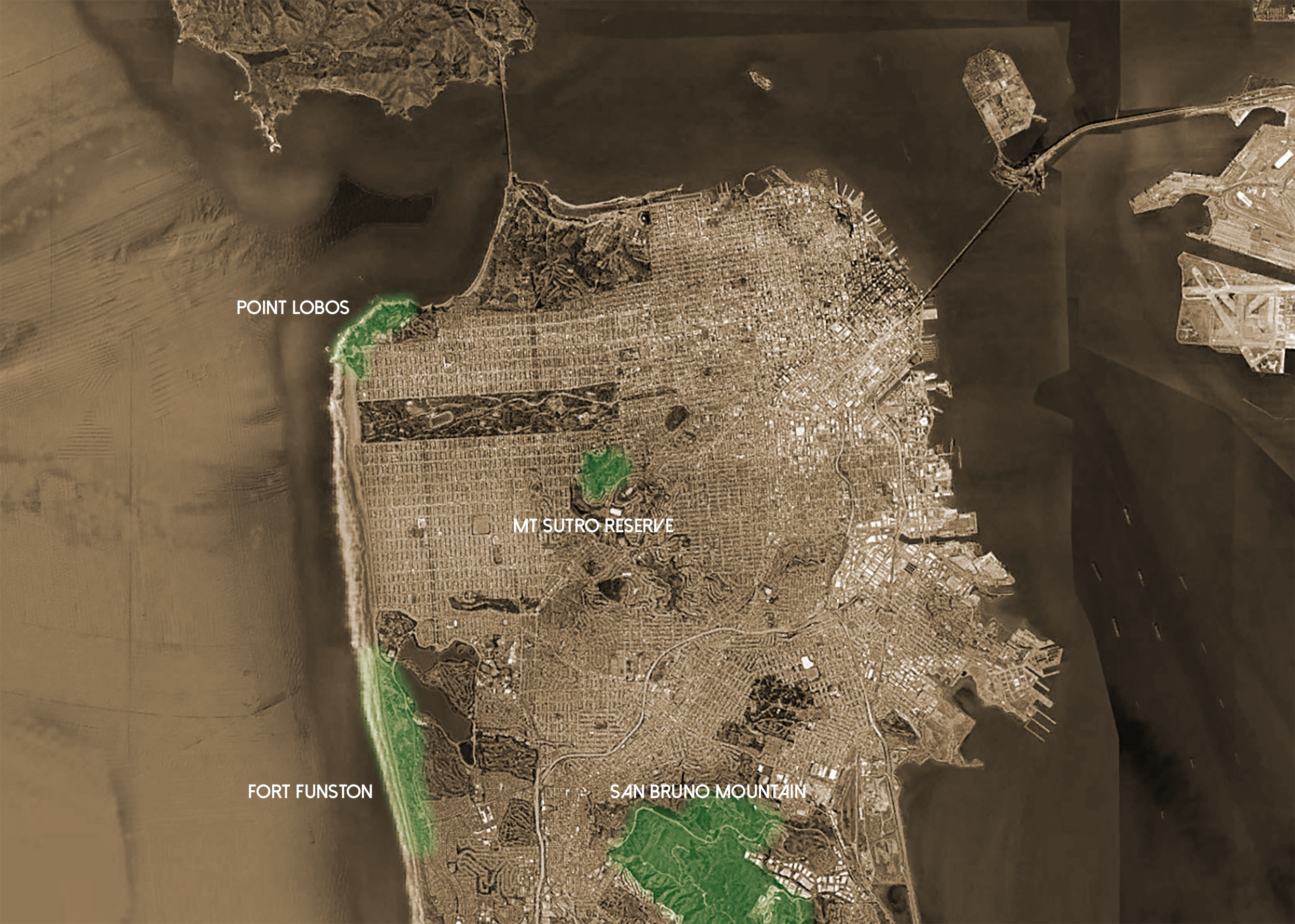Habitats
San Francisco is home to a very unique climate, thanks to the structure of San Francisco bay, pulling cool air off the Pacific keeping the peninsula cool even in the heat of summer.

San Francisco is a dense urban setting, even so it is home to numerous habitats each vastly different from the last.
Ecological Regions
-

Point Lobos
Point Lobos Reserve is located on the North western corner of the peninsula, it is a safe haven for nature within the busy city. With rich flora and fauna as well as unique geological features it is a hotspot for tourists as well as the scientific community. The area is also home to headlands, coves, and hosts one of the richest underwater habitats in the world. Notable wildlife include seals, sea lions, sea otters, and seasonally gray whales. Thousands of seabirds also make the point their home. At the turn of the century it was home to the whaling and abalone industry but was soon repurposed to the reserve it is today. The Whalers Cabin now acts as a cultural history museum.
-

Mt. Sutro Open Space Reserve & Forest
Planted by Adolf Sutro, this 900 ft ‘hill’ stands in the center of San Francisco. The 80 acre forest is all that remains of the former 1100 acre eucalyptus forest that dominated the western half of the city. Over 45 avian species call the forest home among them being the downy woodpecker and the Great Horned Owl. Flora is primarily comprised of towering eucalyptus trees some nearing 200ft in height with an understory of himalayan blackberry.
-

Fort Funston
The sandy bluffs on the west coast of San Francisco are home to a network of hiking and horseback trails, being unprotected from the ocean winds makes this an iconic spot for hang-gliders around the world. On the Southern end of the park is the Native Plant Nursery. Local flora have adapted to the fast winds and only those with deep roots have survived on the constant shifting of the sand-dune terrain. Notably the park is home to the Ban Swallow, a species that once migrated through the state en mass but now are considered an endangered species, Fort Funston and Ano Nuevo are their last nesting sites.
-

San Bruno Mountain
San Bruno stands tall on the southern end of the city. It’s ridge runs east to west, reaching up to an elevation of 1,314 feet at it’s peak. The nearly 2,500 acres of landscape offer both quality hiking routes and a home for native flora and fauna. Some rare plants that call the mountain home include Coast Rock Cress, Pacifica Manzanita, and Franciscan Wallflower. With it’s exposure to the Pacific Ocean wind almost constant, commonly reaching 30mph. In spite of the wind the mountain is host to multiple species of butterflies including San Bruno Elfin, Mission Blue, and Bay Checkerspot.